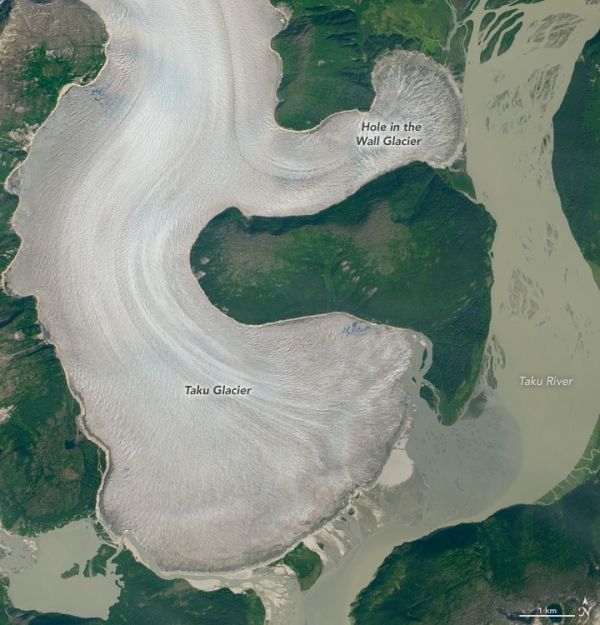For nearly four decades, Mauri Pelto has been studying the advance and retreat of glaciers around the globe. He has watched them succumb, one-by-one, to rising temperatures. Of 250 glaciers that he has watched, all had retreated (or shortened) except one: Taku Glacier.
Now a new analysis shows that Taku has lost mass and joined the rest of the retreating glaciers. “This is a big deal for me because I had this one glacier I could hold on to,” said Pelto, a glaciologist at Nichols College. “But not anymore. This makes the score climate change: 250 and alpine glaciers: 0.”
The natural-color images above show the glacier on August 20, 2014, and August 9, 2019. The images were acquired by the Operational Land Imager on Landsat 8. Though subtle, the changes are most visible at the boundaries between the glacier and river.
Taku stands north of Juneau, Alaska, and is one of 19 notable glaciers in the Juneau Icefield. (The area also includes the famous Mendenhall Glacier, which has experienced an unusually fast retreat—about one third of a mile in the past decade.) Taku is extremely thick: In fact, it is one of the thickest known alpine glaciers in the world, measuring 4,860 feet (1,480 meters) from surface to bed. It is also the largest glacier in the Juneau Icefield.
Continue reading at NASA Earth Observatory
Image via NASA Earth Observatory


